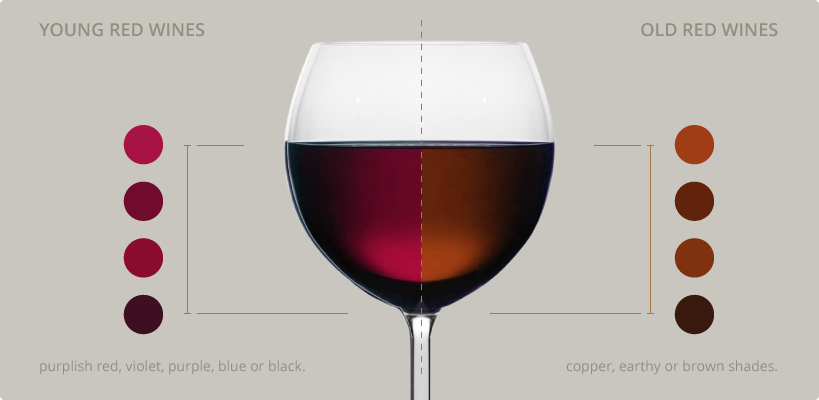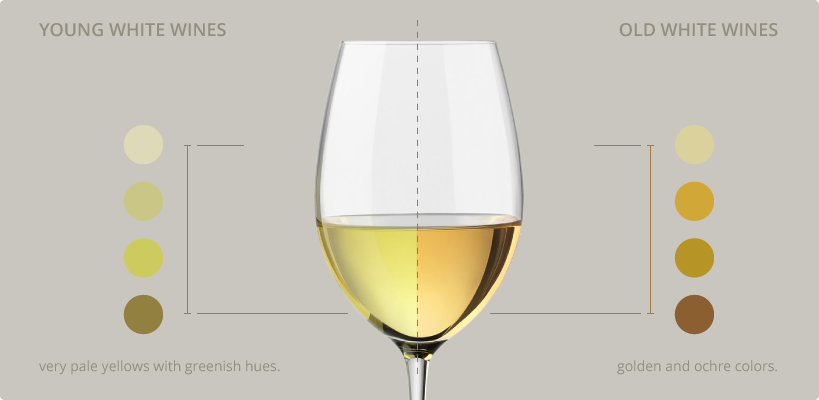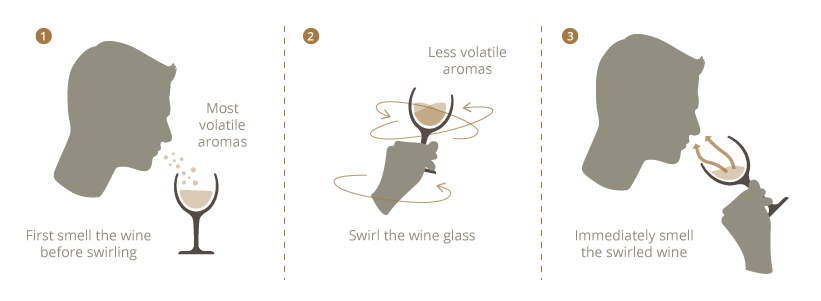Your browser is out of date
We're very sorry. To browse our website, you need update your browser to Internet Explorer 10 or later. Also you can use another modern browser like Google Chrome or Mozilla Firefox.
Tasting wine is a simple process that only requires disposition, training, attention, and memory. All of us are capable of tasting, but we will have to activate our senses.
scroll
It is important to observe wine against a white background while tilting the glass at a 45-degree angle; this will help us appreciate transparency, cleanliness and brightness.

Possible colors for red wines vary according to vintage and variety. Young wines normally display colors like purplish red, violet, purple, blue or black. Old wines usually show copper, earthy or brown shades.

In white wines, colors range from very pale yellow with greenish hues in young wines to golden and even ochre colors in more aged wines.

Wine aromas bring back memories and relationships. That is the reason why we perceive fragrances of vegetables, fruits and even things like leather and wood.
To sense initial aromas, you need to bring the glass close to your nose and inhale. You should get a first impression of the more subtle, light and fleeting fragrances, primarily those of fruits and flowers.
Next, gently swirl the glass to release additional aromatics, including notes of plants and herbs, fruits or savory components.
-White wines may suggest aromas of peach, pear, lemon, grapefruit, apple, and white flowers (roses and jasmine) among others.
-Red wines may suggest aromas of red and black fruits (red currants, plums, strawberries, cherries, raspberries, blackberries, etc.), spices, or leather and wood for example.

It is important to become aware of how our mouth perceives the four basic tastes: sweet, salty, acid, and bitter. Other sensations we can feel in the mouth, such as carbon dioxide bubbles, temperature, astringency, etc., are tactile.
These four tastes are felt in very clearly determined areas of the tongue. Salty sensations are perceived on the left and right edges of the tongue. The tip of the tongue senses sweet flavors. Bitter tastes are perceived at the back of the tongue. Acidity is perceived by the taste buds or papillae located on the sides of the tongue, below the papillae that perceive salty flavors.
In the mouth, we can also assess other aspects like body, astringency, texture, persistence, freshness, and fizziness.

We're very sorry. To browse our website, you need update your browser to Internet Explorer 10 or later. Also you can use another modern browser like Google Chrome or Mozilla Firefox.
Lo sentimos, pero para navegar nuestro sitio es necesario que actualices tu navegador a Internet Explorer 10 o posterior. También puedes utilizar otro navegador moderno como Google Chrome o Mozilla Firefox.